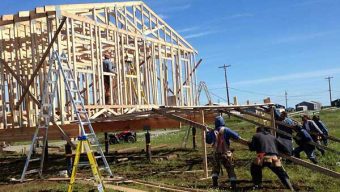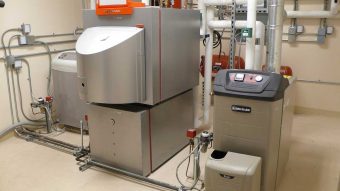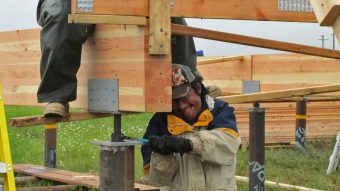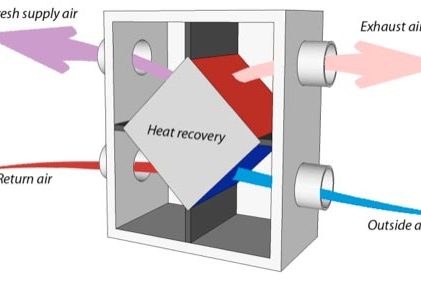Indoor Air Quality
Indoor air quality refers to the quality of the atmosphere in a building, including temperature, humidity, and the amount of pollutants such as carbon dioxide, radon, volatile organic compounds and particulate matter.
You hear about it more these days because homes are being built more airtight and better insulated than ever before. While this means heating bills are smaller, it also means that passive air leakage through the building envelope doesn’t provide sufficient ventilation to get rid of the airborne pollutants inside the home.
First let’s look at temperature and humidity, key factors that determine whether occupants are comfortable and healthy indoors. While temperature is usually regulated by the heating system, water vapor is produced by daily activities such as breathing, cooking, and showering (houseplants and pets kick in more as well).
Some humidity is desirable (30-40% relative humidity is recommended) because it keeps skin and sinuses from becoming too dry, stops static build-up, and helps with conditions like asthma. High humidity, however, can cause problems for the house as well as its occupants.
Humidity levels above 40 percent in winter in a very cold climate like Alaska can lead to condensation within the building envelope, which promotes the growth of mold, mildew and rot, and humidity above 60% any time of the year provides growing conditions for bacteria, viruses, and fungi.
How is Indoor Air Quality improved in homes?
It’s a multifaceted issue. Healthy indoor air quality means not only keeping certain things out of the house–like gas appliances or chemicals–but also providing good air exchange continually through ventilation.
The two basic types of ventilation are described below:
Local ventilation is used in high-pollution areas like kitchens and bathrooms in order to remove unpleasant air before it migrates to other areas of the house. This is typically achieved using exhaust ventilation, such as range hoods and bath fans, which also serves to control humidity levels. These devices can be controlled by switches or run on a timer.
Whole-house ventilation dilutes pollutants that are unavoidable, such as compounds released by furnishings and bio-effluents from people in the home. In the past, when homes were not built as tight as today, whole-house ventilation typically relied on natural air leakage. In these types of homes, even without mechanical ventilation there can still be a lot of airflow in and out of the home.
For example, wind and temperature differences create natural pressure gradients that move air through windows or the building envelope. However, this strategy is not sufficient in homes with lots of insulation and quality air sealing because they block most of the air leakage (which is why they’re so efficient!)
Whatever your strategy for ventilation, make sure it’s properly maintained and that outdoor air vents are open and unblocked.
Related Resources
| Title | Resource Link |
|---|---|
| Attached Garages and Indoor Air Quality Snapshot | |
| BrHEAThe System Snapshot | |
| Department of Energy Ventilation Resources | |
| Healthy House Manual | |
| Healthy Indoor Air Snapshot 1 | |
| Healthy Indoor Air Snapshot 2 | |
| Heat Recovery Ventilators Snapshot | |
| HRV Efficiency Calculator | |
| Pollen Data in Fairbanks | |
| Sustainable Village Indoor Air Quality Survey | |
| Ventilation for Small Homes Report | |
| Ventilation for Small Homes Snapshot |















